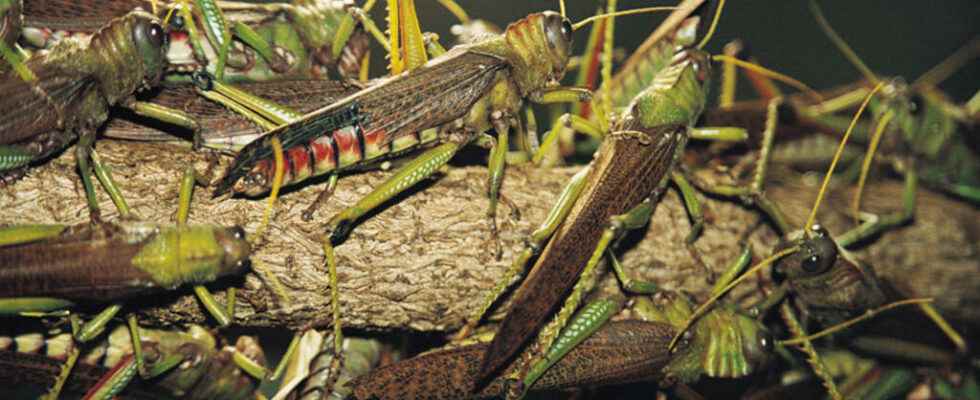In Madagascar, the “locusta migratoria”, this endemic locust of the island, which reproduces at a dizzying speed and which likes to feed on rice or corn plants, has become more and more visible in recent months in certain regions. . Since last October, locust control has restarted, mobilizing significant human resources, on the ground but also in the air. Only, according to the experts, rather than treating the locust problem, it would be better to prevent it.
With our correspondent in Antananarivo, Sarah Tetaud
For several weeks, in the early morning in the Menabe region, the helicopter requisitioned for the locust control campaign has been circling in search of swarms. When it finds it, it instantly spreads chlorpyrifos (ultra low volume, 1L per hectare), an insecticide used to kill locusts.
On board the aircraft, Catherine Constant coordinates the campaign for the FAO, the UN agency specializing in food and agriculture. ” When the FAO is called in for locust control, it is because the country is no longer in a position to control the locust situation alone. So yes, today is an alert because we are not in invasion, but in my opinion, it is still an emergency because if we do not intervene, the situation deteriorates and then all households that are already food insecure will suffer even more “, she explains.
Between 2013 and 2016, Madagascar experienced one of the worst locust crises in its history. To stem the spread of the insect, 37 million dollars were disbursed. Today, studies show that acting in an emergency situation costs thirteen times more than carrying out preventive control, in particular by monitoring population density monthly and dealing locally in the event of a recorded increase.
” When we see them again, it’s already too late »
” In West Africa and North Africa, they carry out the preventive fight and they have not had a crisis since 2005, resumes Catherine Constant. So it really is a strategy that works. But that means mobilizing funds continuously. And from experience, we know that when we don’t see the locusts, we tend to reduce the funds allocated to locusts, and when we see them again, it’s already too late. »
A strategy visibly still little adopted on the island, recognizes half-word Lantonirina Ramaroson, the chairman of the board of directors of the national center for locust control. “ Could this situation have been avoided? Yes. It is necessary that all the observations, the information arrive in time. It takes a lot of means, because it’s the means that do everything… But there is the climate factor and climate change that we don’t control. Drought, floods, cyclones all contribute to the development of these locusts. And that is not controllable by man. »
So far, crops have suffered little loss. The intensive fight and its spreading will continue until July, date of the beginning of the austral winter, and of a period of lull in the reproduction of the insect.
